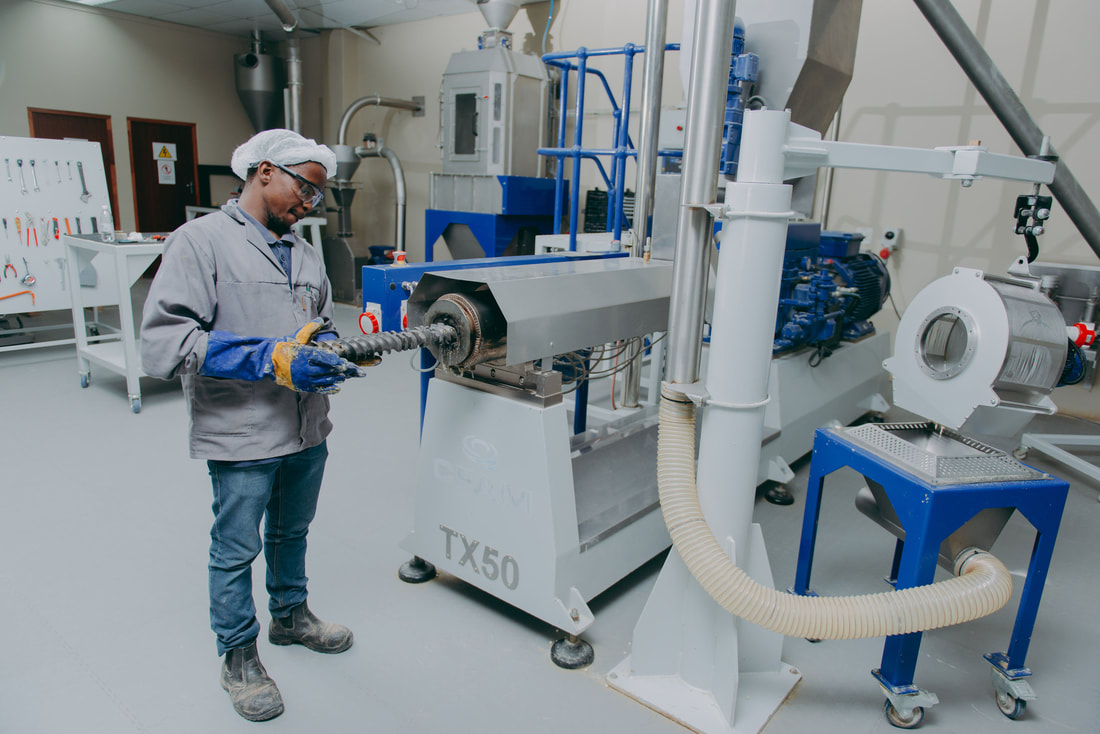How do twin-screw food extruders work?
Twin-screw extruders are designed in a way that two co-rotating and intermeshing screws are attached on splinted shafts in an enclosed barrel. Depending on the process requirements, various process functions and screw profiles can be configured owing to different barrel and screw designs. Hence, by using a twin-screw extruder you can ensure compressing, mixing, transporting, heating, shaping and pumping with an unparalleled level of flexibility.
Twin-screw extruders are used to process liquids, solids (granulates, powders, flours), and possibly gasses and slurries. The extruded products include feed products, textured food, cellulose pumps, etc.
Benefits of rotating twin-screw extruders vs. single screw extruders
For companies that wish to invest in extrusion technology, deciding between single and twin-screw extruders can be tough. Here are some benefits of twin-screw extruders:
1. Outstanding mixing capability
A major advantage of co-rotating twin-screws is the extraordinary mixing capability which adds great value to the processing units. The wide range of specialized screw designs — such as kneading blocks, reverse screw elements, gear mixing elements, etc. — and interpenetration of the screws allows the mixing extent to be adjusted with great precision. This leads to greater control over the mixing quality and intensity.
2. Increased level of process flexibility
Twin-screw extruders offer significant flexibility due to their ability to handle multiple processing functions — such as mixing, melting, cooling, venting, etc — and their screw speed independency.
Conversely, in single screw extruders, the screw speed and throughput are interdependent, in addition to the multiple processing functions and screw designs being restricted, thus offering reduced flexibility.
3. Enhanced process productivity
Twin-screw extruders can handle a larger variety of mix formulations and raw materials owing to the pumping action of the screws. This lowers the overall process downtime. In contrast, the process performance of single screw extruders decreases as the screw wears increases, driving up the manufacturing time.

